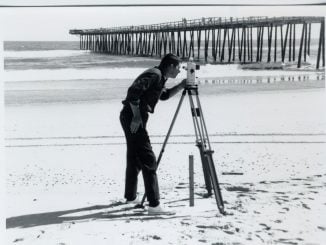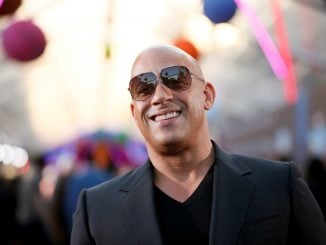JACKSONVILLE — In October 2015, 1st Sgt. Steven Ellison was diagnosed with kidney cancer. There had been no warning signs and no symptoms, but the cancer was far enough along that his left kidney had to be removed.
He beat cancer, moved forward in service to his country and was overseeing 1,200 fellow Marines. It was during a three-month checkup in November 2016 that doctors discovered cancer in both of his lungs.
“I’m receiving chemotherapy again. My goal is to be in remission again by June so I can head back out to the fleet. I’m proud to serve my country,” said Ellison.
Having served his country for 22 years, he’s eager to return and when he does, he moves in rank to sergeant major.
“Marines are always focused on others. Being here, I get to take this time and save it for me. I can focus on me and my treatment, appointments and chemotherapy,” said Ellison. “This place here can be the cornerstone for helping me transition back, for helping others transition back to society. When we leave here we are being sent out into the world as a better person.”
This place Ellison refers to is the Warrior Hope and Care Center (WHCC) operated by the Wounded Warrior Battalion-East at Camp Lejeune. WHCC is a recovery and resources center focused on serving wounded, ill, or injured Marines, and designated sailors attached to or in support of Marine units, as well as their families, as they transition back to active duty or into civilian life.
“I think the Marine Corps got it right. Every service does something, but I think we’ve put enough resources directly to influence our wounded, ill, and injured that it adds a different flavor to it. A typical Marine Corps flavor – intrusive leadership, take care of your own, no man left behind – all of those typical clichés, but it is embodied in this organization and backed up with the resources to do it right,” said Lt. Col. Christopher Hrudka.
From 2010-2011, 80 percent of the population at WHCC were wounded during combat in the Afghanistan and Iraq wars. Today, less than 20 percent are combat wounded. Combat injuries and amputations are the result of IED blasts and gunshots in the war zone. Other warriors are receiving recovery and rehabilitation assistance while they battle cancer or other chronic unresolved illness, receive treatment for post-traumatic stress disorder, traumatic brain injury or other mental health illnesses, and recover from training or vehicle accidents.
The Wounded Warrior Regiment Headquarters are at the Marine Corps Base Quantico in Virginia. Camp Lejeune is the home of the Wounded Warrior Battalion-East while Camp Pendleton in California is the home of the West Battalion. From there, each battalion oversees Wounded Warrior Detachments. There are currently 185 Marines being supported at Camp Lejeune.
Of the Wounded Warriors receiving services through WHCC, 95 percent will transition to civilian life while only 5 percent will return to the fleet.
“All roads lead to transitioning, whether they are here three months or three years. All of our operations, whether it is physical reconditioning, exercise and sport programs, or recovery care and medical care, focus on transitioning,” said Craig Stephens, command advisor.
“If picking up their three-year-old daughter is the most important thing, then we want to help them accomplish that goal,” he added.
There are five lines of operation toward recovery for wounded Marines: medical, mind, body, spirit, and family. While doctors and hospitals oversee the medical, the battalion focuses on the mind, body, sprit and family aspects of recovery.
Adriana Pelaez, program specialist and transition coordinator, assists warriors and their families with a variety of tasks on the road to writing the next chapter of their lives.
“We know the chapter they are writing with their career in the military has changed, and they are writing a different chapter than they expected. We want them to understand they will be OK and can be successful in this new chapter,” said Pelaez.
Pelaez provides one-on-one assistance for a variety of areas including: internship selection, interview prep and resume building, financial aid documentation, grants and benefits completion, educational degree plans, interest assessments, and understanding disability accommodations.
Certified athletic trainers and strength coaches are available in the state-of-the-art fitness center to assist the wounded warriors in establishing exercise goals and routines to best suit their recovering bodies. From adaptable equipment of cycles and weights to powerlifting to aquatics and underwater treadmills to rock climbing, shot put and air rifle; there’s something for everyone.
A chaplain is available for faith conversations to renew the spirt and the warriors’ families are involved throughout the transition process.
“For instance, in a tank battalion, then the emphasis is on readiness, use and expertise of tanks as well as making sure the personnel work together to make the tanks function to the best of their ability. Where here, the focus is on the individual Marine,” said Staff Sgt. Nelson Andrade, whose been receiving care at the center since October 2016.
“As Marines, we are very task-oriented. We need constant direction, structure, and execution of plans. We work at a high-end tempo. When you take someone centered around that high tempo of work and bring them to where things slow down to what you want to do, it is unfamiliar. It’s an awkward phase at first, but it passes as we learn how to transition,” he added.
Through the Wounded Warrior program, Marines are rebuilding the whole person mind, body, spirit, and family by taking a step back and putting themselves first.
Ellison added, “People always think of Marines as the first to go in and the last to come out. Marines are compassionate people, too.”



